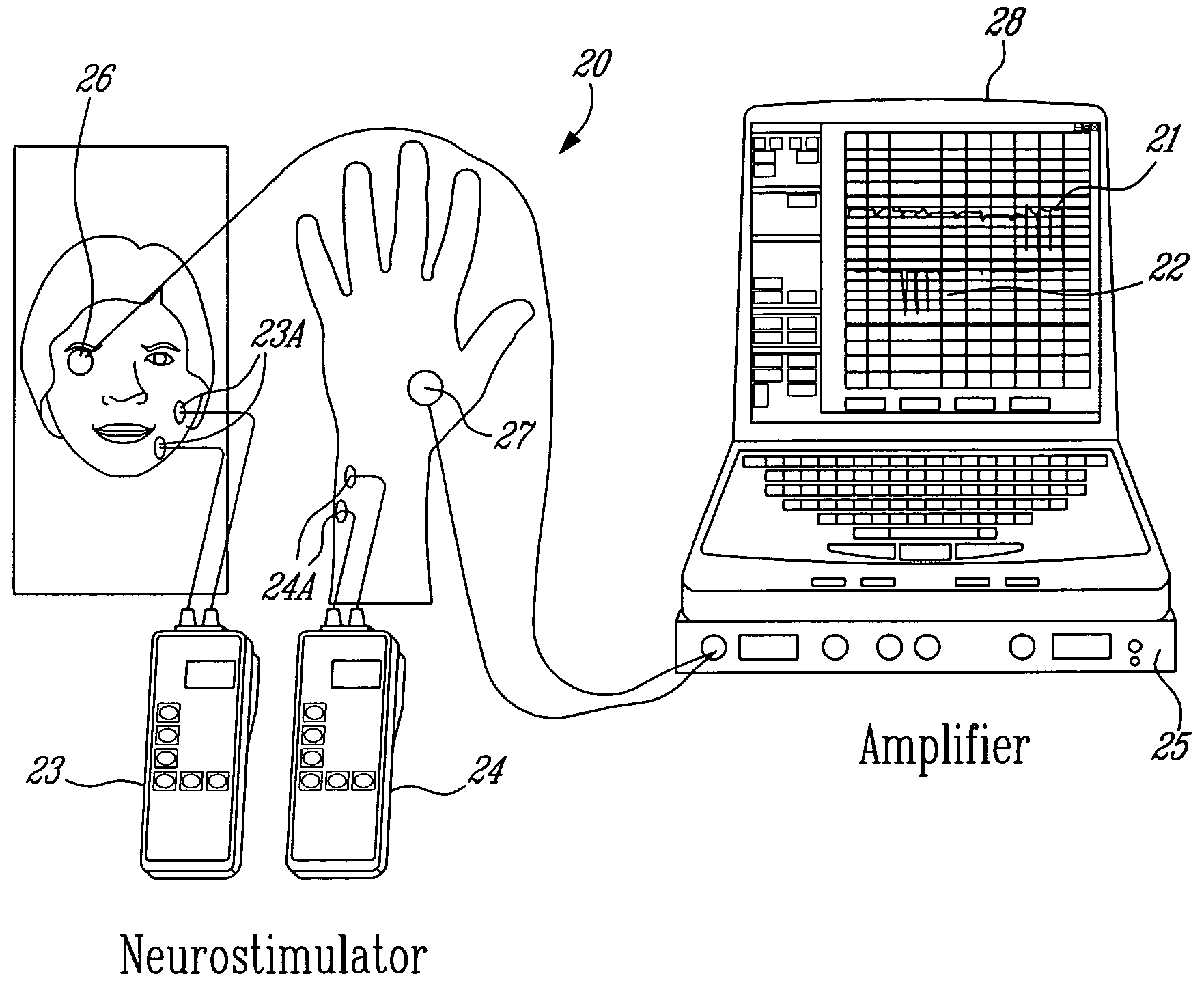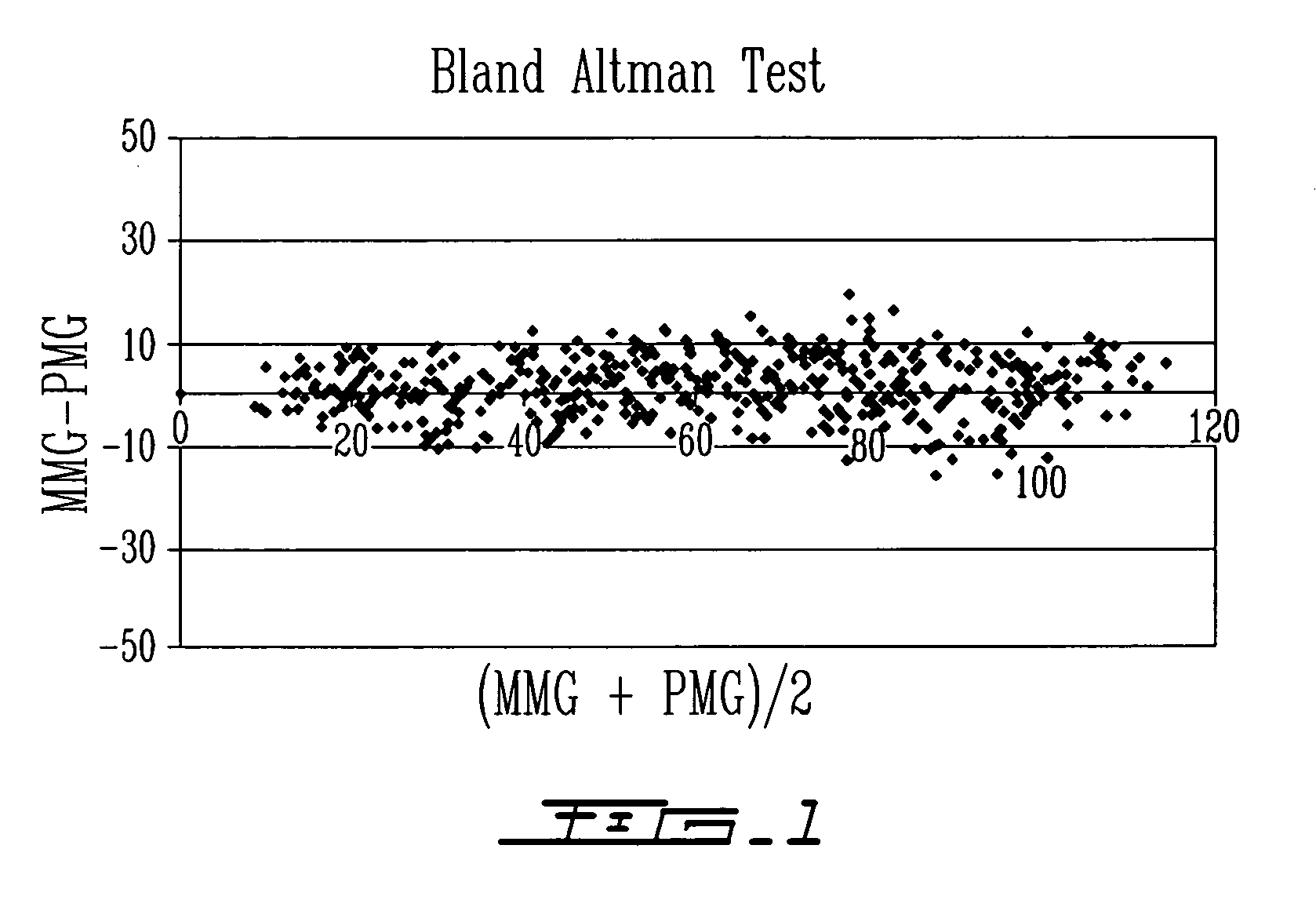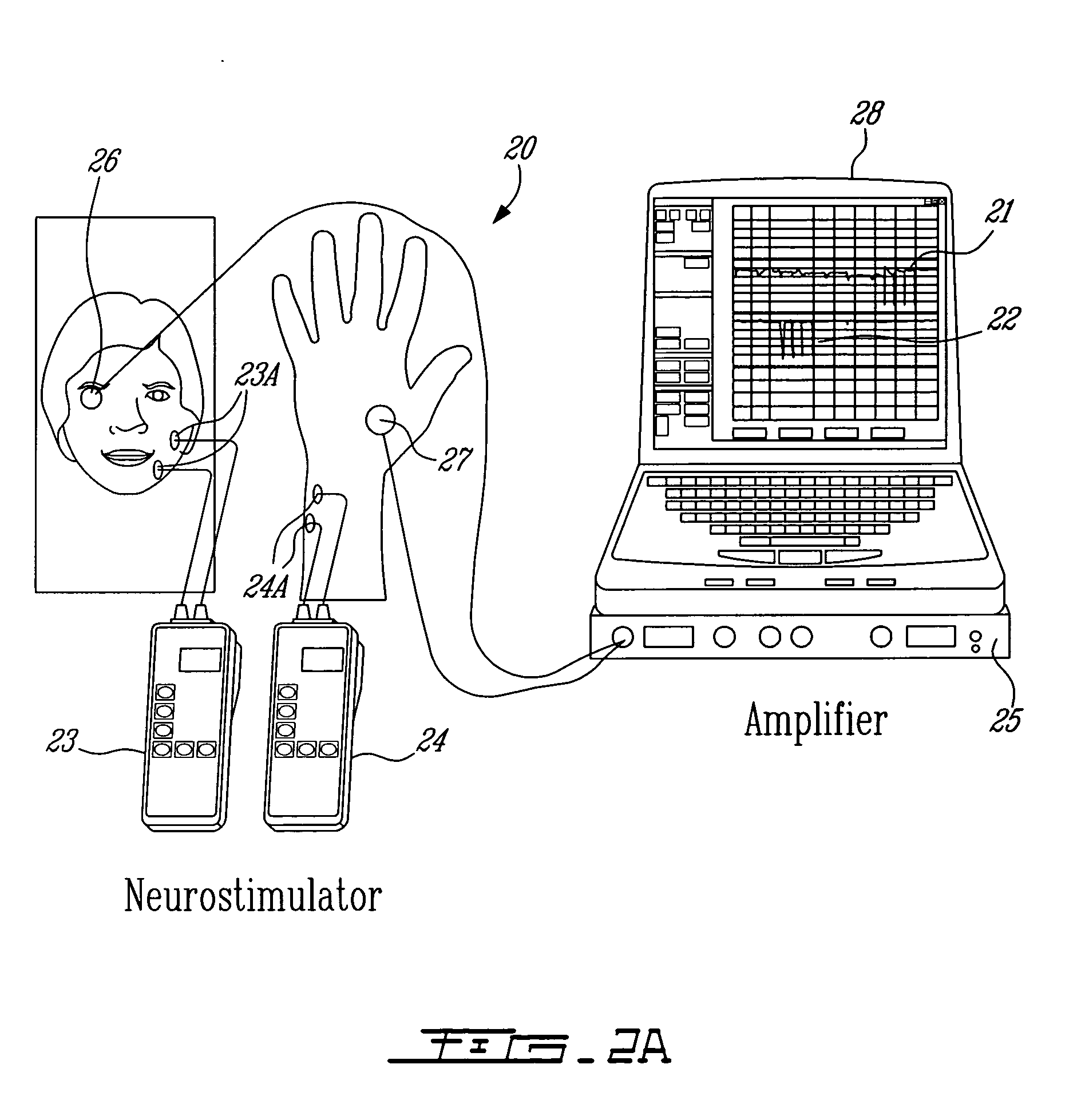Neuromuscular monitoring using phonomyography
a technology of phonomyography and neutruscular vein, which is applied in the direction of ultrasonic/sonic/infrasonic diagnostics, applications, therapy, etc., can solve the problems of reducing the knowledge of muscle relaxant action, reducing the effectiveness of surgery, and reducing the risk of respiratory complications
- Summary
- Abstract
- Description
- Claims
- Application Information
AI Technical Summary
Problems solved by technology
Method used
Image
Examples
Embodiment Construction
[0047] Muscle contraction creates pressure waveforms. Phonomyography is the detection of these pressure waveforms with a low frequency sensitive microphone acting as a pressure waveform sensor [9]. Detection of these pressure waveforms through phonomyography can be used to determine neuromuscular blockade [[4], [10] and [11]]. Since the amplitude of the sound waves detected at the microphone is a function not only of stiffness and tension of the muscle, but also of the distance and type of the tissue separating the muscle and the recording microphone, the position of the microphone in relation to the muscle and the monitored muscle affects the signal characteristics [9].
[0048] In the illustrative embodiments of the present invention, phonomyography is used as a method for monitoring neuromuscular blockade at all muscles of interest. It is believed that phonomyography could become a new standard of neuromuscular monitoring for research and clinical routine. Phonomyography has shown t...
PUM
 Login to View More
Login to View More Abstract
Description
Claims
Application Information
 Login to View More
Login to View More - R&D
- Intellectual Property
- Life Sciences
- Materials
- Tech Scout
- Unparalleled Data Quality
- Higher Quality Content
- 60% Fewer Hallucinations
Browse by: Latest US Patents, China's latest patents, Technical Efficacy Thesaurus, Application Domain, Technology Topic, Popular Technical Reports.
© 2025 PatSnap. All rights reserved.Legal|Privacy policy|Modern Slavery Act Transparency Statement|Sitemap|About US| Contact US: help@patsnap.com



